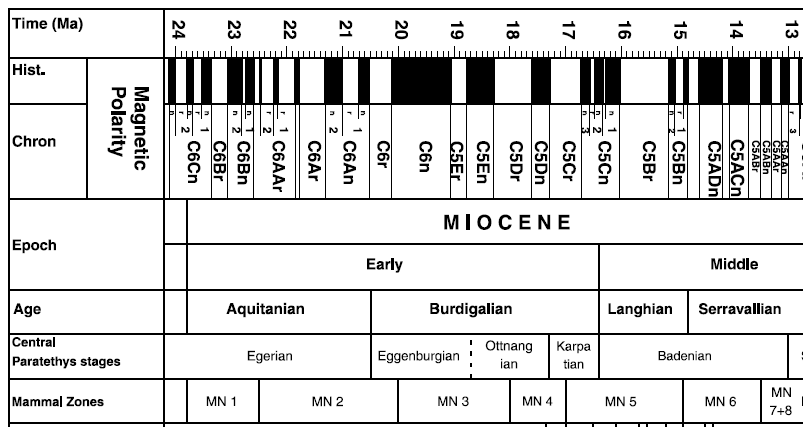
| Miocene epoch | ||
| Cenozoic: Neogene Period |
Miocene |
| Oligocene | Paleogene | Neogene | ||
| Pliocene | Aquitanian | Cenozoic Timescale |
|
Paleogene |
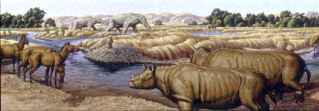
Miocene megafauna - horses, rhinos, and (center background) mastodons
image from American Museum of Natural History - Timelines Exhibit former page)
The Miocene or "less recent" is so called because it contains fewer modern animals than the following, Pliocene, epoch. The Miocene lasted from 18 million years, making it the longest epoch of the Cenozoic era. This was a huge time of transition, the end of the old prehistoric world and the birth of the more recent sort of world. It was also the high point of the age of mammals
During the late Miocene the island continent of India slammed into Asia, pushing up the Himalayas and triggering a global cooling that was to culminate in the Pleistocene ice ages. Elsewhere the Rockies, and Andes rose as well.
The Miocene was a time of warmer global climates than those in the preceding Oligocene, or the following Pliocene. During this time modern patterns of atmospheric and ocean circulation formed. The isolation of Antarctica from Australia and South America meant the establishment of the circum-polar ocean circulation, which significantly reduced the mixing or warmer tropical water and cold polar water, and further led to the buildup of the Antarctic ice cap.
Miocene stratigraphy is complex because a great many different measures are in common use. These include ICS stages, absolute dates, magnetic polarity reversals ("chrons"), land mammal stages (which differ between continents), and local geological zonation schemes (which differ even more). Below is a table from Böhme (2003), which correlates the systems for Europe. The land mammal stages (MN1 through MN 14) are also used in Africa, and are frequently found in the literature on human evolution. This system is continued through the end of the Pliocene (MN17). For details and definitions, see Agustí et al. 2001).

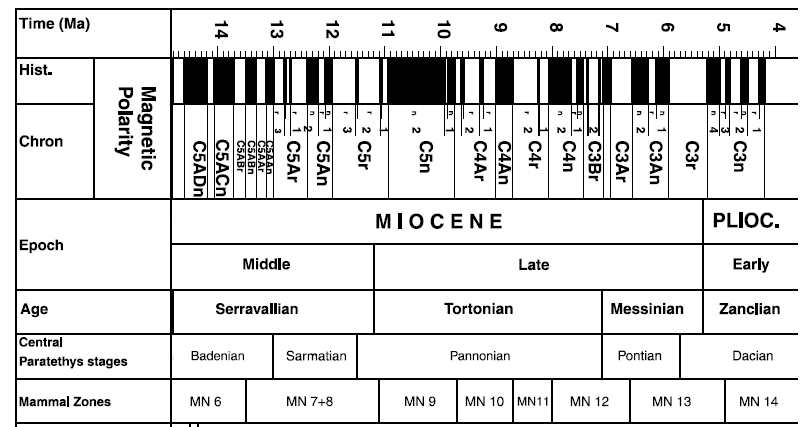
The land mammal schemes for South America and North America are shown, in somewhat less detail, on the Cenozoic Timescale page.
Two major ecosystems first appeared during the Miocene: kelp forests and grasslands. The expansion of grasslands is correlated to a drying of continental interiors and a global cooling. Later in the Miocene a distinct cooling of the climate resulted in the further reduction of both tropical and conifer forests, and the flourishing of grasslands and savanna in their stead.
In Eurasia and North America, the spread of grasslands forced an evolutionary change in herbivorous mammals, with the forest browsers giving way to the prairie grazers. Grass is a very tough and abrasive material, and herbivores like horses evolved very high-crowned teeth to cope with the wear. Both the perissodactyls and artiodactyls underwent a period of rapid evolution during the Miocene. During the Oligocene artiodactyls had developed an advanced digestive systems (the rumen), which was now helping them deal with this new food source.
Mammal diversity reached its peak during the Miocene. Many were hoofed grazers or browsers. The epoch was marked by further evolution of horses, which became plains type animals as large as ponies, the chalicotheres, camels, rhinoceroses and anthropoid apes, including the Dryopithecus which inhabited Southern Europe, Asia, and Africa. Also this period saw the appearance of the mastodons, raccoons, and weasels. The first deer and giraffes also appear, along with the first hyenas. The slow clumsy creodonts, well adapted to the jungle thickets, were replaced by the swift intelligent cat and dog type Carnivora as the dominant predators. There were many eccentric browsing types as well - the chalicotheres - think of a horse crossed with a gorilla - were able to rear up on their hind legs and pull down the branches of trees. The Asian indricotheres and the American entelodonts both flourished then died out during this epoch.
In the seas whales, dugongs and extinct elephant-like desmostylida flourished. Giant sharks such as Carcharodon megalodon reached 13 to 15 metres in length and preyed on the early whales.
The Miocene saw the continuation of bioregional provinces in some instances, and great mammal migrations in other cases, as animals that had evolved on different continents during the Eocene and Oligocene spread via land-bridges.
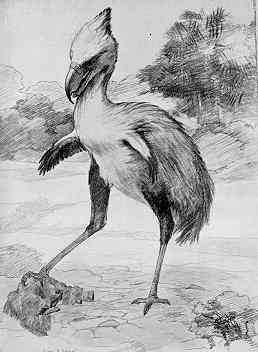
North America was home to three-toed horses, sheep-like oreodonts, several types of rhinoceroses, pronghorns, camels, protoceratids, and horse-like chalicothere herbivores, with bear-dogs and saber-toothed cats among the carnivores, and the pig-like entelodonts as successful omnivores. In Eurasia the fauna included early deer and giraffes, the giant indricotheres and chalicotheres that were quite different from the American types. African mammals included elephants and mastodons, apes, and Old World monkeys. Australia was a lush tropical rainforested land with an amazing abundance of marsupials, while South America was home to glyptodonts, armadillos, anteaters, New World monkeys, and horse-like litopterns, and a range of marsupial carnivores, giant carnivorous birds (Phorusrhacids), and strange crocodiles sebecosuchids).
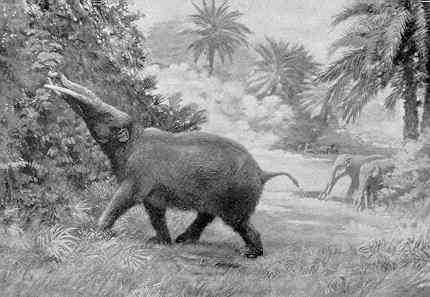
Great migrations saw mastodontids spread out from Africa to Eurasia and North America. Cats, giraffes, pigs, and cattle went the opposite direction, from Eurasia to Africa. Horses and camels spread out from North America into Eurasia.
University of California Museum of Paleontology -- The Miocene Epoch - excellent intro
Agusti, J, L Cabrera, M Garces, W Krijgsman, O Oms & JM Pares (2001), A calibrated mammal scale for the Neogene of Western Europe: State of the art. Earth Sci. Rev. 52: 247–260. WWW.
Bohme, M (2003), The Miocene Climatic Optimum: evidence from ectothermic vertebrates of Central Europe. Palaeogeog. Palaeoclimat. Palaeoecol. 195: 389-401. WWW